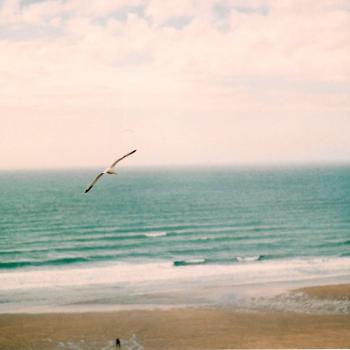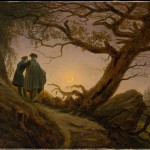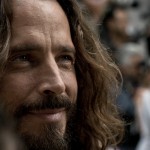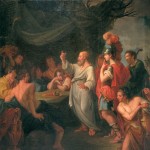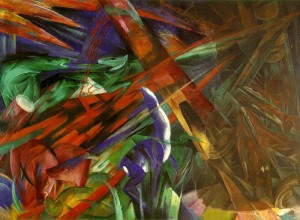 Continued from yesterday.
Continued from yesterday.
Mathematicians sometimes employ the imagery of a three-dimensional landscape to represent the challenge of solving complex problems. Imagine such a landscape, replete with peaks and valleys, stretching to infinity. Now imagine we want to find the highest point on that landscape, but we can only see the points that we’ve visited.
We’re standing on the highest point we’ve found, but are we as high as we could be? Are we really on a molehill, thinking it’s a mountain only because we’ve not yet discovered what real heights look like? How can we explore this terrain without spending an eternity randomly trying new locations?
Mathematicians have conjured a variety of mechanisms for grappling with this problem. They deploy algorithms, for example, that search for higher ground. They grapple with not only “solving” the problem represented by the theoretical landscape, but of inventing methods that can solve a variety of such problems more efficiently than a random walk.
Human societies face a similar challenge. The practitioners of our arts, sciences, and technical crafts are all constantly searching, in their varied ways, for higher ground. They experiment, they wander, they follow hunches. Sometimes they chart higher terrain and wait for us to catch up (the benefits of anesthesia had been amply demonstrated for decades, for example, before it found widespread use among surgeons).
Other times our explorers find crevices, and in their delusions declare them mountaintops. They rail at the rest of us for refusing to descend. Perhaps a fair number of recent artistic endeavors fall in that category.
The great challenge in this obscured landscape—both for the mathematician and the society—is that we may get stuck in the foothills. We get stuck and lose the capacity to descry higher locales. This capacity will falter, scientist Michael Polanyi warned decades ago, when scientists—and with them citizens—are no longer attuned to truth.
Examples of this include not only fraud and shoddy research, but the deeper epistemological flaws in modern scientism—summarized as the denuding of what we believe about what can be believed.
The advancement of science and culture, Polanyi argued, is driven by the vision and passion of scientists and artists. Their intuitions help them choose fruitful areas to explore. But, if they are no longer compelled by a longing for the beauty of an elegant discovery, those intuitions become clouded. They pursue their appetites instead, in the form of career advancement, notoriety, and whatever pleases their paymasters. They cannot envision great and untapped truths because they are not motivated by the hunger for those truths.
Even if a scientist retains clarity of vision in the face of funders who care only for the technological applications of her research, and university officials who demand that she publish so many papers with “positive” findings per year, she has to be able to trust that the echoes coming back to her, from the labors of her fellow scientists in their various domains, ring true.
We long ago passed the point where anyone can grasp more than a sliver of all scientific knowledge. As knowledge has advanced, the work of scientists has become more interdependent.
What this means, on a material level, is that the erosion of trustworthiness among researchers can have dramatic economic consequences. Entrepreneur Peter Thiel argues that we’re witnessing a deceleration of innovation in most technological domains.
Part of his evidence is the fact that, while earlier generations discovered ways to use critical natural resources ever more efficiently, driving down commodity prices and rendering doomsday predictions about overpopulation moot, the real average price of these commodities has been rising since 1993, indicating that our pace of discovery is stymied. The pace of innovation in areas ranging from transportation to biochemistry, meanwhile, appears to be slowing. Thiel blames inept government policies for all this, but could it be that the scientific enterprise itself is faltering?
Even more worrisome, a community’s ability to trust intellectual authorities plays an essential role, as Polanyi noted decades ago, not only in the advance of science, but in cultural preservation. When we can no longer trust that the people charged with telling us truths—be they scientists, journalists, politicians, clergy, or teachers—are both truthful and competent at discerning truth, our communities lose what Hannah Arendt called their “factuality.”
And when we lose the capacity to mutually agree upon what is true, we risk, at the very least, devolving from the city on a hill to dispersed individuals, each comfortable selecting whatever facts and beliefs suit his lifestyle.
Got strong political convictions? There’s a news station for every stripe. Thinking about alleged connections between vaccinations and autism? Whatever you choose to believe, there are people with PhD’s standing ready to confirm your choice.
At the very worst, beyond losing the benefits of intellectual advances, we risk tribalism and organized brutality, because absent a trusted community of authorities who honestly hash out what is true and what is false, the determination of facts passes from the hands of the competent to the hands of the influential: to demagogues and thugs, in other words.
One of the most compelling elements of Polanyi’s book Personal Knowledge is his recounting how Nazis and Soviet Communists appropriated science for their own monstrous ends, seizing, in the process, the mantle of truth.
So it’s a big deal when science is done poorly, because where science is mangled, truth is mangled. There are smart, committed scientists working on this problem. But I suspect they’ll only ameliorate the symptoms, because they’re after technocratic solutions. Better empirical methods, better fact-checking, better grant-writing and article-reviewing.
The underlying cancer lies not in the methods, but in whatever madness yields so many scientists who could be passionate about anything lower than truth. But I suppose that can be said of all domains, and, maybe, all of us. We are all less than our best selves when we lost sight of beauty, when we lose the gut sense that there is truth beyond ourselves—be we chemists or novelists or accountants.
We become less than our best selves, and the question becomes: can we find our way back again?
Tony Woodlief lives outside Wichita, Kansas, and is the author of a spiritual memoir, Somewhere More Holy. His essays on faith and parenting have appeared in The Wall Street Journal, The London Times, and WORLD Magazine. His short stories, two of which have been nominated for Pushcart prizes, have been published in Image and Ruminate. His website is www.tonywoodlief.com.
Image Used: The Fate of the Animals (1913), by Franz Marc, oil on canvas, 77 × 105 in.


